I have a dataframe called 'games':
Game_id Goals P_value
1 2 0.4
2 3 0.321
45 0 0.64
I need to split the P value to 0.05 steps, bin the rows per P value and than create a line graph that shows the sum per p value.
What I currently have:
games.set_index('p value', inplace=True)
games.sort_index()
np.cumsum(games['goals']).plot()
But I get this:
No matter what I tried, I couldn't group the P values and show the sum of goals per P value..
I also tried to use matplotlib.pyplot but than I couldn't use the cumsum function..
